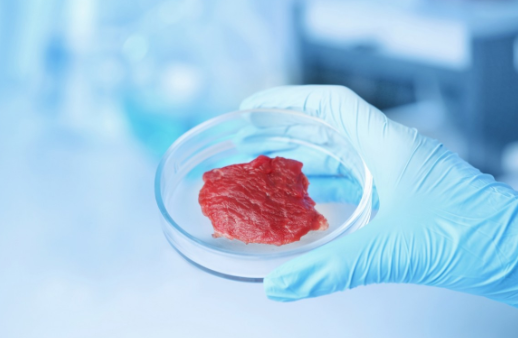Developments in Food: Lab Grown Meat

Luke A. MacQueen, a bio engineering research assistant at Harvard University helped create a more realistic texture for the lab grown meat.
Imagine a world where a hamburger did not come from a cow, but from a Petri dish. This sounds like something from a science fiction film, but lab grown meat is real.
The process of growing meat in a lab was invented by Mark Post in 2013. His revolutionary invention proved that by extracting and using stem cells from a cow while mimicking the conditions in which the cells need to survive in a petri dish, he could grow beef. While the process works and the meat it produces is legitimate, the texture of the meet lacked the tenderness that most people value.
Luke A. MacQueen, a bio engineering research assistant at Harvard University helped create a more realistic texture for the lab grown meat. He describes Post’s process as simply growing a “pile of cells” which lacks the fibrous, tender texture of traditional meat. MacQueen was able to incorporate proteins and gelatin into the meat which gave it a much more authentic texture. He also has figured out a way to make more than just beef: “a chicken breast or a piece of shrimp or steak or a liver — all of those are things that we could make.”
While lab grown meat is still in the “works” MacQueen and Post both anticipate that lab grown meat is going to explode with popularity. One concern is the cost of the meat, but with mass production of it and the continuation of efficiency, the price should reduce as well.
Even though Lab Grown Meat has its supporters, making it mainstream will be difficult. Traditional animal meat is part of American culture, so to alter the process of “meat making” could come as a cultural shock to the American people. The goal of lab grown meat is to reduce the environmental impacts of slaughterhouses and inhumane treatment of animals; introducing it to a widespread group of consumers would help make this goal possible on a large-scale.









